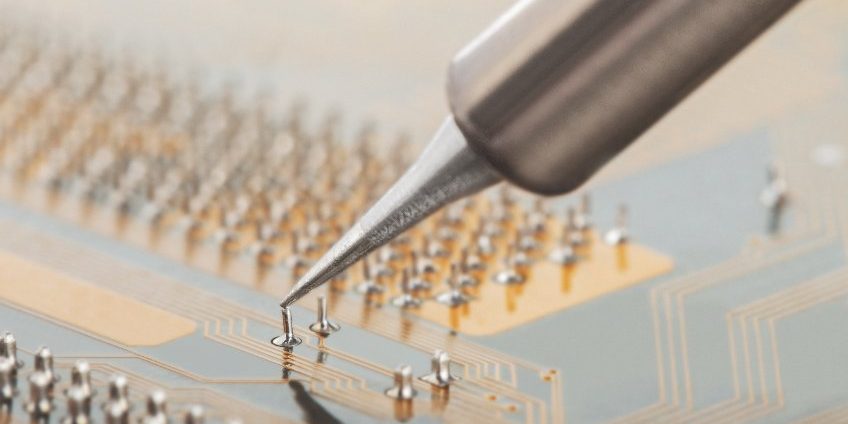In one of our previous blog posts, we talked about 4 common errors in SMT assembly. In this article, we’ll discuss four more mistakes you should avoid when working on SMT assembly or soldering. Also, consider taking a structured, comprehensive surface mount soldering training with practical exam to ensure mastering the basics of this crucial electronic manufacturing process.
No or insufficient solder leading to electrical opens
Electrical opens are when there’s no complete bond between the lead and the pad or between two supposedly electrically connected points.
- One potential cause for this error is when there’s scooping during the printing process. Often, scooping is caused by excessive pressure using a polypropylene squeegee for solder paste printing. Consider using a metal squeegee or a harder durometer type instead.
- Another reason for electrical openings is blocked stencil openings due to dried-up solder paste. Consider cleaning the stencil to remove any blockage.
- Foreign materials on the pad such as dust can also cause this problem. When this happens, make sure to use another PCB.
- A squeegee running at high speed can also prevent the solder paste from filling into the stencil openings. To remedy this, make sure to reduce the squeegee speed.
- Sometimes, electrical openings are caused by low viscosity or metal content of the solder paste. Make sure you’re using quality solder paste that suits your PCB needs.
Enroll in a comprehensive SMT soldering course for hands-on training on the proper execution of basic soldering techniques.
Solder beading
Solder beading is like solder balling but is generally discrete and located beside a component.
- This defect can be caused by slow reflow ramp up profile, causing the unreflowed paste to move under the component and form a solder bead underneath it. To ensure this is prevented, consider executing a ramp up profile of 1.5-2.5°C per second.
- This error is also caused by having too much solder paste on component pads. This could be because the stencil is too thick, its openings are too wide and/or the dispense time of paste is inappropriate. As remedies, consider using thinner stencils, reducing their opening size, using smaller dispenser needles and/or reduce the purging timing of the dispenser.
- Your squeegee can also cause beading. Make sure to check the squeegee pressure as well as clean the underside of the squeegee with a solvent while ensuring that the cleaning solvent has completely evaporated before printing.
- Lastly, you’ll need to ensure that the squeegee is properly aligned with the PCB to eliminate beading.
Learn more about soldering defects and how to rectify them when you enroll in a comprehensive surface mount soldering training.
Cold slump
Slump is the characteristic of solder paste to spread after it is applied on the PCB. Ideally, the deposited paste on the board should be in the same state until a component is attached to it. Therefore, slumps should be minimized, or else they will result in bridging and other soldering defects that lead to short circuits.
The degree of a cold slump differs on various factors such as paste viscosity, temperature, paste deposit level and paste drying speed. Possible remedies to cold slumping are the following:
- Use solder paste with higher metal content or viscosity
- Reduce the squeegee pressure
- Reduce syringe pressure when dispensing
- Use new paste if the thickeners in the current one are destroyed
- Ensure printer temperature is not too high
- Ensure there’s no residue of cleaning solvent and other products on the screen and other surfaces that can get in contact with the paste
Hot slump
Hot slump happens during the preheat phase of the reflow, wherein the flux mobility increases and causes the solder paste’s heavy particles to sink and spread, creating a slump.
Hot slumps are generally caused by slow reflow ramp up profiles. Thus, you’ll have to increase the ramp up of the reflow profile to 2-3°C per second.
Upgrade your career with comprehensive soldering classes
Boost your career in the electronics manufacturing industry by enrolling in a comprehensive terminal and post, through hole, and SMT soldering course. The technical course from Blackfox includes a student soldering manual, workmanship PCB with components for practical exams, and certification upon passing the course with flying colors.
Get in touch with us today to learn more.






